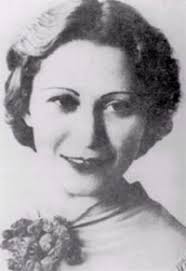1783 - 1875
By: Chelsea Vargas | Date Added:

María Bibiana Benítez Batista was a Puerto Rican writer who was Puerto Rico's first female poet and one of its first playwrights. She was the first of three renowned poets in her family, the others being her niece and adopted daughter Alejandrina Benítez de Gautier, and Alejandrina's son José Gautier Benítez. Benítez was born in the town of Aguadilla. Her father was a lieutenant in the Spanish Army who was famous for having successfully defended San Juan against a British invasion. Her family loved literature and owned a private library which contained a collection of the best books available at the time. Her father could afford such a luxury since in addition to commanding the military garrison in Ponce, he also served as a sub-delegate to the Royal Intendancy, an important position within the Spanish colonial government, as well as a mayor of the city, meaning that he controlled both the military and civilian powers in one of the island's largest cities. Benítez was able to attend the best private schools where she learned about poetry and composition. María read and studied the classics of the Spanish Golden Age, fostering a fondness for poetry. She remained faithful to Spain, the mother country of Puerto Rico, and King Fernando VII. She was inspired by the Spanish writers Luis de León and Pedro Claderón de la Barca. At the beginning of her life, María lived in Ponce (from 1797 to 1805), San Juan (from 1805 to 1809), Fajardo (from 1809 to 1819), Mayagüez (from 1819 to 1822), Aguadilla (from 1822 to 1825), and Guayama (1825–1839). In 1820, one of her brothers Pedro José and his wife died and she took it upon herself to raise her orphaned niece Alejandrina Benítez de Gautier, who would in the future become a renowned poet herself. When María's father died in 1832, she successfully petitioned the colonial governor for a grant of land to see to the welfare of her family. Around 1841, María lived in Mayagüez. She adopted the town's name as a pseudonym, in addition to Una Mayagüezana (A woman from Mayagüez), Jíbaro de Mayagüez (local from Mayagüez), La dama duende (the elf lady) y Una jibarita (a local girl). Maria settled in San Juan in her fifties. There, she was an eyewitness to many historical events, which inspired her works. Her home became gathering place for literary discussions between local poets, writers, and intellectuals. She was blind in her later years. In 1832, Benítez published her first poem, La Ninfa de Puerto Rico ("The Nymph of Puerto Rico") in La Gaceta de Puerto Rico, the first newspaper published in Puerto Rico. It is considered to be the first poem written by a Puerto Rican woman. It is also the best known of her poems. "La Ninfa" is a commemorative ode in neoclassical style inspired by the creation of the first Royal Territorial Supreme Court of Puerto Rico. The poem was placed in the court as a symbol of justice. It reveals Maria's pride in her Puerto Rican territorial affiliation and identity, with intimations of a romantic sensibility yet to come. In the poem, Maria endows the lamb in the center of the Puerto Rican heraldic shield with symbolism of the compliant submissiveness of her colony to the Spanish Crown. Her metaphorical insistence on the passivity and meekness of the lamb perhaps represents the earliest allegory of the figure of the docile Puerto Rican, which more than a century later made a controversial topic of contemporary Puerto Rican intellectual discourse. María wrote La Cruz del Morro ("The Cross of El Morro") in 1862, making her the first Puerto Rican to write a dramatic play. The play premiered at Teatro Municipal, San Juan on June 16, 1897, to commemorate the centennial of the English attack on the city. La Cruz was based on the attack of the city of San Juan by the Dutch with the intention of invading Puerto Rico in 1625 and the defense by the islanders. In her seventies, she wrote A La Vejez ("To Old Age") (1861), a meditation on aging. Other works include Memorias (“Memories”) (1833), "Soneto" ("Sonnet") (1839), and Romance Histórico (“Historical Romance”).
click hereShare your thoughts on this story with us. Your comments will not be made public.
Email
Copyright ©2016 - Design By Bureau Blank